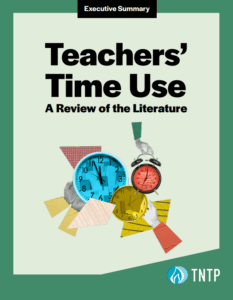In the past, we’ve described what an innovative teacher compensation system can do: attract and retain great teachers, reward outstanding classroom performance, and give teachers true career advancement opportunities. But a big chunk of teacher compensation funding—up to 30 percent of teacher salaries in some states—isn’t in play when designing (or redesigning) teacher compensation systems: It’s tied up in state retirement plan contributions.
The financial woes of state pension plans are making headlines these days, but that’s only part of the problem. More troubling is the fact that despite the large amount of money invested in them, these systems may not be providing the right kind of retirement benefits for many teachers. And in fact, they may be creating a far larger retirement security issue than meets the eye.
But what if schools weren’t locked into state retirement systems? Would they do anything differently if they had free rein to allocate all their compensation funding in ways they thought would be most effective at recruiting and retaining the teachers they wanted?
In 16 states, charter schools actually have the freedom to opt out of state retirement plans and spend their compensation funding as they wish. We’ve been studying teacher retirement in charter schools in a subset of seven states, to see what they did differently. On the whole, these schools seem to be planning for an increasingly mobile teacher workforce, rather than building their retirement systems on the expectation that teachers will stay put for the long term. Here’s what we’ve learned so far:
When given the opportunity to opt out of state retirement plans, many schools choose to do so. Opt-out rates varied by state, but across the seven states we studied, more than half of all charter schools opted out of their state systems.
Opt-out schools offer teachers portable retirement benefits with shorter vesting periods. Depending on the school, these benefits take the form of a 401(k), 403(b) or some hybrid, but in all cases, the schools offer defined contribution plans teachers can take with them when they leave the school. These schools also offer retirement plans with shorter vesting periods (the amount of time a teacher must be enrolled in the plan before he or she is eligible to collect the full employer contribution). No schools in our survey reported a vesting period longer than five years, and more than half reported immediate vesting or a period of one year or less. This is in sharp contrast to state plans, of which all but one have vesting periods of five years or longer—some as long as 10, as is the case in New York.
Rather than spend the same amount of money as they would under a state plan, opt-out schools often reallocate retirement funds into other forms of compensation. In perhaps the most innovative plan we learned about during conversations with CMOs and individual charter schools, one small charter network provides its teachers with a pool of money to pay for benefits they want, including healthcare, vision, and dental (all optional), plus short and long-term disability and life insurance (required). Money not spent on these benefits is given back to the teacher in the form of a lump-sum check at the end of the year. Teachers may choose to invest this money toward retirement or use it for any other purpose they prefer. The HR director at this network noted the plan helps the schools compete for talent while also benefitting teachers who want to pay off student loans before saving for retirement. And because this approach is portable, it may attract teachers who anticipate moving over the course of their career.
Some opt-out schools use reallocated retirement funds to increase teacher salaries. One school we spoke with was able to raise salaries five percent higher than the average salary in surrounding districts in order to better compete for top talent. Other schools used reallocated funds to offer benefits they would not have otherwise been able to provide, such as daycare for children of their employees.
Our findings so far are only preliminary, but they nonetheless provide examples of how charter networks are responding to the needs of today’s teachers, including helping more teachers to save for a well-funded retirement. While traditional pensions typically offer a generous retirement package for the small number of teachers who remain in the same system for an entire career, they can be much less effective for teachers who move in and out of the education workforce or who move from one school system (or charter network) to another—which is typical of modern workers in many fields, including education. We’re beginning to see employers responding to the labor market, not just because traditional pensions are difficult to fund, but also because they aren’t always attractive benefits for a growing proportion of the teacher force.
Note: We would like to thank Dr. Michael Podgursky of the University of Missouri for his help with this research.








